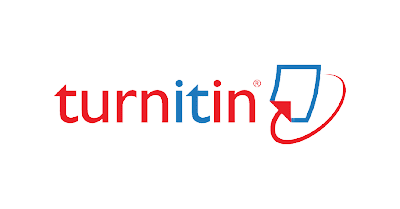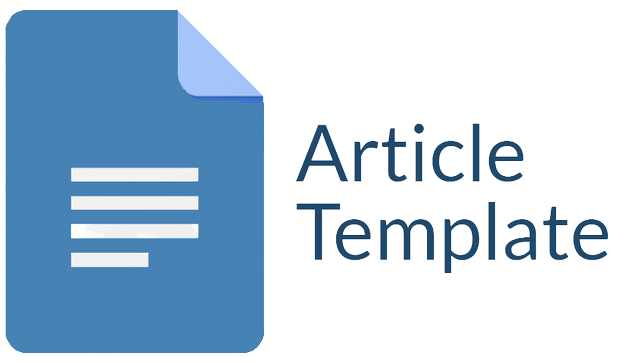PERANCANGAN APLIKASI BERGERAK MECHA PADA BIDANG OTOMOTIF DENGAN METODE DESIGN THINKING
Abstract
Design Thinking adalah pendekatan kreatif dan empatik untuk memecahkan masalah yang lebih berfokus kepada pengguna. Pendekatan ini menggabungkan logika analitis dengan kreativitas dan inovasi untuk menghasilkan solusi yang lebih baik. Pendekatan ini dapat diterapkan dalam pengembangan aplikasi yang dalam prosesnya, design thinking memiliki 5 tahapan yaitu: empathize, define, ideate, prototyping, dan test yang semuanya memiliki keterlibatan dengan pengguna. dalam pengembangan aplikasi bergerak Mecha ini juga menggunakan atomic design yang dimana dapat memudahkan pengembang untuk mengubah rancangan desain aplikasi apabila ada solusi yang lebih baik melalui umpan balik dari pengguna. Oleh karena itu, pengembangan dari aplikasi Mecha ini akan menerapkan pendekatan dengan metode design thinking dan atomic design demi memenuhi kebutuhan yang diinginkan oleh pengguna.
Downloads
References
B. Frost, “Atomic Design.” Diakses: 14 Juni 2023. [Daring]. Tersedia pada: https://www.softouch.on.ca/kb/data/Atomic%20Design.pdf
D. A. Rusanty, H. Tolle, dan L. Fanani, “Perancangan User Experience Aplikasi Mobile Lelenesia (Marketplace Penjualan Lele) Menggunakan Metode Design Thinking,” 2019. [Daring]. Tersedia pada: http://j-ptiik.ub.ac.id
H. Joo, “A Study on Understanding of UI and UX, and Understanding of Design According to User Interface Change,” 2017. [Daring]. Tersedia pada: http://www.ripublication.com
R. Dam dan T. Siang, “What is Design Thinking and Why Is It So Popular?” Diakses: 14 Juni 2023. [Daring]. Tersedia pada: https://athena.ecs.csus.edu/~buckley/CSc170_F2018_files/What%20is%20Design%20Thinking%20and%20Why%20Is%20It%20So%20Popular.pdf
R. Septian Hardinata, I. Sulistianingsih, R. F. Wijaya, dan A. M. Rahma, “Perancangan Sistem Informasi Pelayanan Rekam Medis Menggunakan Metode Design Thinking (Studi Kasus : Puskesmas Simeuluetengah) Design Of Medical Record Service Information System Using The Design Thinking Method (Case study: Puskesmas Simeulue Tengah),” Journal of Information Technology and Computer Science (INTECOMS), vol. 5, no. 2, 2022, Diakses: 13 Juni 2023. [Daring]. Tersedia pada: https://doi.org/10.31539/intecoms.v5i2.5013
R. Wolniak, “SYSTEMY WSPOMAGANIA W INŻYNIERII PRODUKCJI Inżynieria Systemów Technicznych.” Diakses: 13 Juni 2023. [Daring]. Tersedia pada: https://yadda.icm.edu.pl/baztech/element/bwmeta1.element.baztech-81d700a1-e4ea-4257-87cf-d0b790873bc8/c/wolniak2_SWwIP_2017_6.pdfWolcott
Z. Dwi Martha, E. Pramono Adi, dan Y. Soepriyanto, “ebook berbasis mobile learning.” [Daring]. Tersedia pada: http://journal2.um.ac.id/index.php/jktp/article/view/3705
Copyright (c) 2023 Rio Yuda Sakti, Irving Vitra Paputungan

This work is licensed under a Creative Commons Attribution-ShareAlike 4.0 International License.
Jurnal allows anyone to compose, correct, and do derivative works, even for commercial purposes, as long as they credit for the original work. This license is the freest. It is recommended for maximum distribution and use of licensed material.
The submitted paper is assumed not to contain any proprietary materials that are not protected by patent rights or patent applications; The responsibility for technical content and protection of proprietary materials rests with the authors and their organizations and not the responsibility of journal or its editorial staff. The primary (first/appropriate) author is responsible for ensuring that the article has been viewed and approved by all other authors. The author's responsibility is to obtain all necessary copyright waivers to use any copyrighted material in the manuscript before submission.
Jurnal Pendidikan, Sains dan Teknologi allows the author(s) to hold the copyright without restrictions and allow the author(s) to retain publishing rights without restrictions. Jurnal Pendidikan, Sains dan Teknologi CC-BY-SA or an equivalent license as the optimal license for the publication, distribution, use, and reuse of scholarly work. Jurnal Pendidikan, Sains dan Teknologi allows the author(s) to hold the copyright without restrictions and allow the author(s) to retain publishing rights without restrictions. Jurnal Pendidikan, Sains dan Teknologi CC-BY-SA or an equivalent license as the optimal license for the publication, distribution, use, and reuse of scholarly work.
In developing strategy and setting priorities Jurnal Pendidikan, Sains dan Teknologi recognize that free access is better than priced access, libre access is better than free access, and libre under CC-BY-SA or the equivalent is better than libre under more restrictive open licenses. We should achieve what we can when we can. We should not delay achieving free in order to achieve libre, and we should not stop with free when we can achieve libre.
Jurnal Pendidikan, Sains dan Teknologi is licensed under a Creative Commons Attribution-ShareAlike 4.0 International License.
You are free to:
- Share a copy and redistribute the material in any medium or format
- Adapt a remix, transform, and build upon the material for any purpose, even commercially.
- The licensor cannot revoke these freedoms as long as you follow the license terms.






